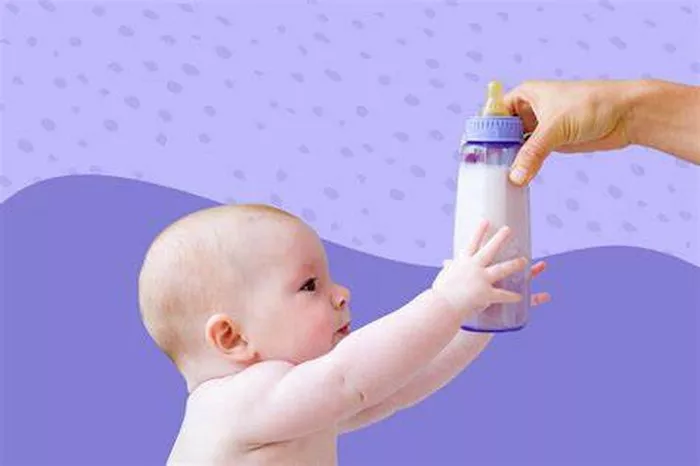Transitioning from a bottle to a sippy cup is an important milestone for toddlers. It helps them develop independence and improves their drinking skills. Choosing the right sippy cup can make this transition smoother. This article explores the best sippy cups available, their features, and tips for successful transition.
Understanding Sippy Cups
Sippy cups are designed to help toddlers move from bottles to regular cups. They come with lids and spouts that reduce spills. Most sippy cups have handles for easy grip. They are available in various materials, including plastic, stainless steel, and silicone.
When selecting a sippy cup, consider the design and functionality. The cup should be easy for your child to hold. The spout should be comfortable for them to drink from. Some cups are designed for specific stages of development, making it easier to choose the right one.
Types of Sippy Cups
Sippy cups can be categorized into three main types: traditional, straw, and open cups.
Traditional Sippy Cups
Traditional sippy cups have a hard or soft spout. They are often the first choice for parents. These cups typically have a spill-proof design. The spout allows toddlers to sip without the risk of spilling.
One popular choice in this category is the Munchkin Click Lock Weighted Straw Cup. It has a weighted straw that allows your child to drink from any angle. This feature helps them mimic drinking from a regular cup.
Straw Sippy Cups
Straw sippy cups are another great option. They encourage proper sipping techniques. Drinking through a straw helps strengthen mouth muscles. This can be beneficial as your child grows.
The Nuby No-Spill Super Spout Cup is a great example. It features a soft silicone straw and a no-spill design. This cup helps toddlers learn how to use straws effectively while reducing mess.
Open Cups
Open cups are ideal for older toddlers ready for the next step. These cups do not have lids or spouts. They promote better drinking skills and help children learn to control their movements.
The EZPZ Tiny Cup is an excellent choice. It is designed for small hands and helps toddlers learn to drink without a lid. Using open cups also encourages social skills during mealtime.
Key Features to Look For
When choosing the best sippy cup, consider the following features:
Spill-Proof Design
A spill-proof design is crucial during the transition. Look for cups with seals or valves that prevent leaks. This feature helps reduce messes and encourages independence.
Easy to Clean
Sippy cups should be easy to clean. Choose cups with few parts that can be easily assembled and disassembled. Dishwasher-safe cups can save you time and effort.
Durable Material
Durability is important, especially for toddlers who may drop their cups. Look for cups made from sturdy materials. Plastic cups should be BPA-free. Stainless steel cups are also a great option for their durability.
Comfortable Grip
A comfortable grip is essential for little hands. Choose cups with ergonomic designs or handles. This helps toddlers hold their cups securely while drinking.
Age Appropriateness
Select a cup that matches your child’s developmental stage. Some cups are designed for infants transitioning from bottles, while others are for older toddlers learning to use regular cups.
Tips for a Smooth Transition
Transitioning from a bottle to a sippy cup can be challenging. Here are some tips to make it easier for both you and your child.
Start Slowly
Begin the transition by introducing the sippy cup alongside bottle feeds. Allow your child to explore the cup. Encourage them to take small sips while still using the bottle. This gradual approach can help reduce resistance.
Make It Fun
Incorporate fun elements into the transition. Choose cups with bright colors or favorite characters. Allow your child to pick their cup. This engagement can make the process more enjoyable.
Practice Together
Model the behavior you want to see. Show your child how to drink from the sippy cup. Make it a fun activity. Encourage them by clapping and praising their efforts.
Be Patient
Every child is different. Some may adapt quickly, while others may take time. Be patient and understanding during the transition. If your child resists the sippy cup, give them a break and try again later.
Limit Bottle Time
Gradually reduce the time your child spends with the bottle. Avoid using the bottle for comfort or during sleep. This helps reinforce the idea that the sippy cup is the new option.
Recommended Brands and Products
Several brands are known for producing high-quality sippy cups. Here are a few recommendations:
1. Munchkin
Munchkin offers a variety of sippy cups designed for different stages. Their cups often feature spill-proof designs and are easy to clean.
2. Nuby
Nuby is known for its innovative designs. Their sippy cups with straw options help children develop proper sipping techniques.
3. OXO Tot
OXO Tot is renowned for ergonomic designs. Their sippy cups are comfortable for toddlers to hold. They also offer a range of colors and styles.
4. Tommee Tippee
Tommee Tippee sippy cups are designed with little ones in mind. Their cups are spill-proof and come in various fun designs.
5. Thinkbaby
Thinkbaby offers BPA-free sippy cups. Their products focus on safety and durability. They are great for eco-conscious parents.
Conclusion
Transitioning from a bottle to a sippy cup is an important step in your child’s development. Choosing the right sippy cup can make the process easier and more enjoyable.
Consider factors such as spill-proof designs, ease of cleaning, and comfortable grips. Be patient during the transition, and make it a fun experience for your child. With the right cup and a supportive approach, your child will master this new skill in no time.
Invest in a good sippy cup today and watch your child thrive as they move towards drinking independence.
Related topics:


